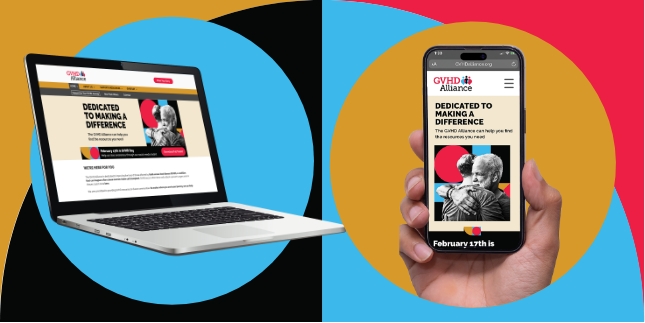No matter where you are in your GVHD journey
WE HAVE RESOURCES THAT CAN HELPWE HAVE RESOURCESTHAT CAN HELP
Learn about treatment options, better understand your condition, and advocate for yourself and others


GET STARTED HERE
Select any tab to see more.



 Monitoring GVHD Symptoms
Monitoring GVHD Symptoms

 Monitoring GVHD Symptoms
Monitoring GVHD Symptoms
 Learning About GVHD Treatment
Learning About GVHD Treatment

 Learning About GVHD Treatment
Learning About GVHD Treatment 
 Finding a Doctor for GVHD
Finding a Doctor for GVHD

 Finding a Doctor for GVHD
Finding a Doctor for GVHD
 Exploring Clinical Studies
Exploring Clinical Studies

 Exploring Clinical Studies
Exploring Clinical Studiesrecommendations for
posttransplant care
recommendations for
posttransplant care
LIVING WITH GVHD
- Physical functioning
- Fatigue
- General health
- Social functioning
- Psychological distress (depression, anxiety)
LEARN ABOUT GVHD
Thousands of people are diagnosed with
GVHD each year in the United States alone.
But the number of lives impacted is immeasurable.
Choose an option below to learn more about the types and symptoms of GVHD.
- aGVHD usually occurs in the first 3 months after a bone marrow/stem cell transplant, but it can occur later as well
- It can affect the skin, the gut, and/or the liver
- The skin is usually the first organ affected
Symptoms of aGVHD may include
- A rash that looks like measles
- Nausea that doesn’t go away
- Vomiting
- Poor appetite
- Diarrhea that can cause severe abdominal pain and cramping
- Liver issues
- Jaundice
FIND RESOURCES FOR YOU
- Understand the risk of GVHD
- Recognize the symptoms of GVHD earlier
- Optimize discussions with health care teams
GET STARTED HERE
RESOURCES FOR GVHD ADVOCATES
 GVHD Caregiver Support Tool
GVHD Caregiver Support Tool GVHD Signs and Symptoms
GVHD Signs and Symptoms GVHD Day 100 Milestone
GVHD Day 100 Milestone GVHD Fact Sheet
GVHD Fact Sheet GVHD Patient Discussion Guide
GVHD Patient Discussion Guide GVHD Day 100 Milestone
GVHD Day 100 Milestone GVHD Nutrition & You
GVHD Nutrition & YouGVHD Day is celebrated on February 17th each year.
It’s a day to raise awareness of GVHD, while highlighting the need for more research and support for everyone impacted.
Learn more and see how you can get involved today.
 GVHD Caregiver Support Tool
GVHD Caregiver Support Tool GVHD Signs and Symptoms
GVHD Signs and Symptoms GVHD Day 100 Milestone
GVHD Day 100 Milestone GVHD Fact Sheet
GVHD Fact Sheet GVHD Patient Discussion Guide
GVHD Patient Discussion Guide GVHD Day 100 Milestone
GVHD Day 100 Milestone GVHD Nutrition & You
GVHD Nutrition & YouGVHD Day is celebrated on February 17th each year.
It’s a day to raise awareness of GVHD, while highlighting the need for more research and support for everyone impacted.
Learn more and see how you can get involved today.
WE FOCUS ON THE PARTS OF GVHD WE DON’T OFTEN TALK ABOUT
You’ll hear from people with GVHD and caregivers alike.
MARROW MASTERS PODCAST
Season 14 of Marrow Masters, a podcast series produced by the National Bone Marrow Transplant Link (nbmtLINK), focuses on cGVHD—the parts people don’t often talk about—including topics such as male and female sexuality, atypical presentations of cGVHD, lung issues, psychosocial support, personal perspectives, and more.
Listen Now
ADVOCATE SPOTLIGHT
John York is a well-known actor who plays Mac Scorpio on General Hospital. In December 2022, John was diagnosed with myelodysplastic syndrome, or MDS, and smoldering multiple myeloma—2 blood and bone marrow disorders. Last December, he received a blood stem cell transplant. John is now back at work and is a great advocate of NMDP and the GVHD Alliance.
Learn More About John's Story on YouTube Connect With John on X to Read His GVHD Messages of Hope
Connect With John on X to Read His GVHD Messages of Hope





